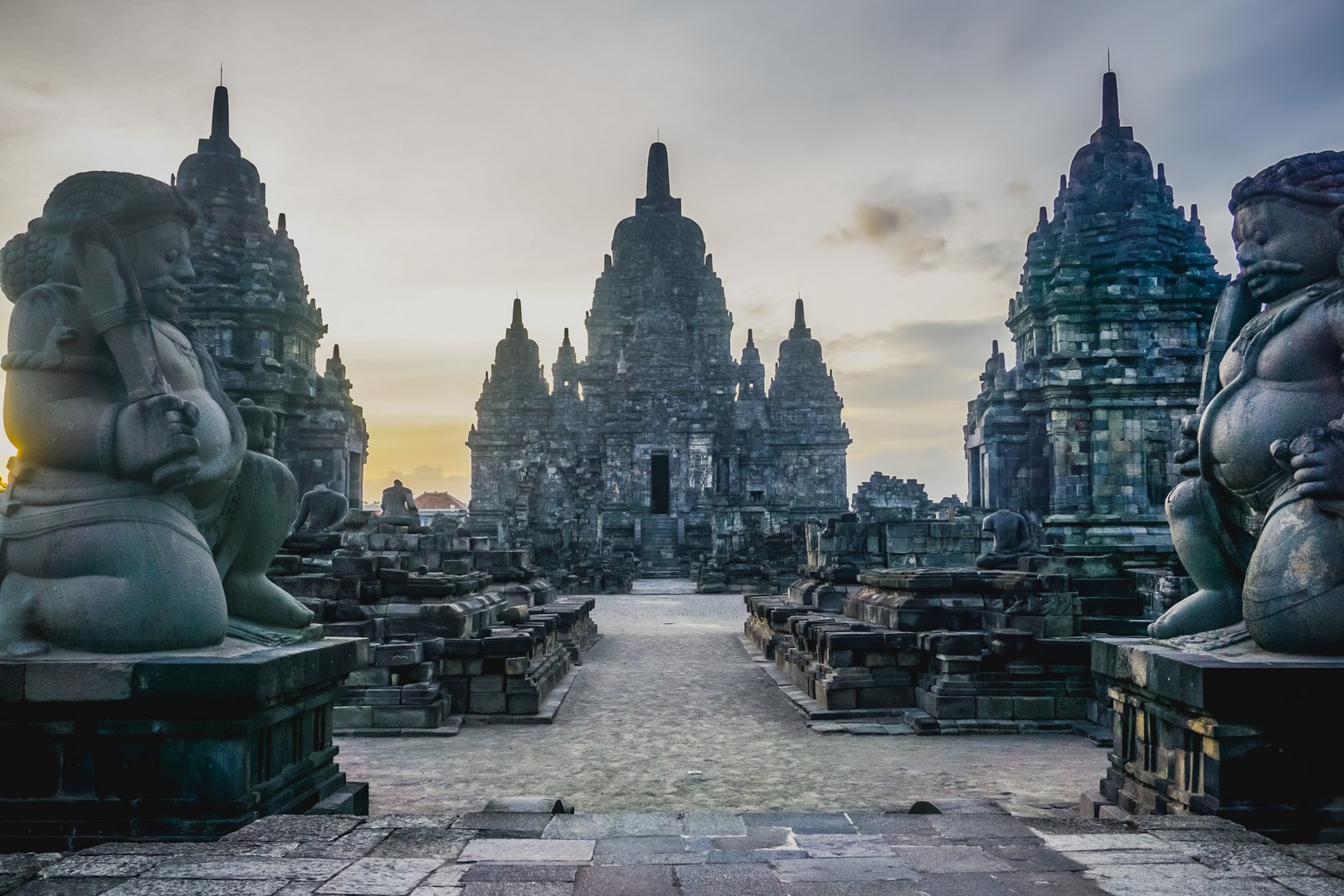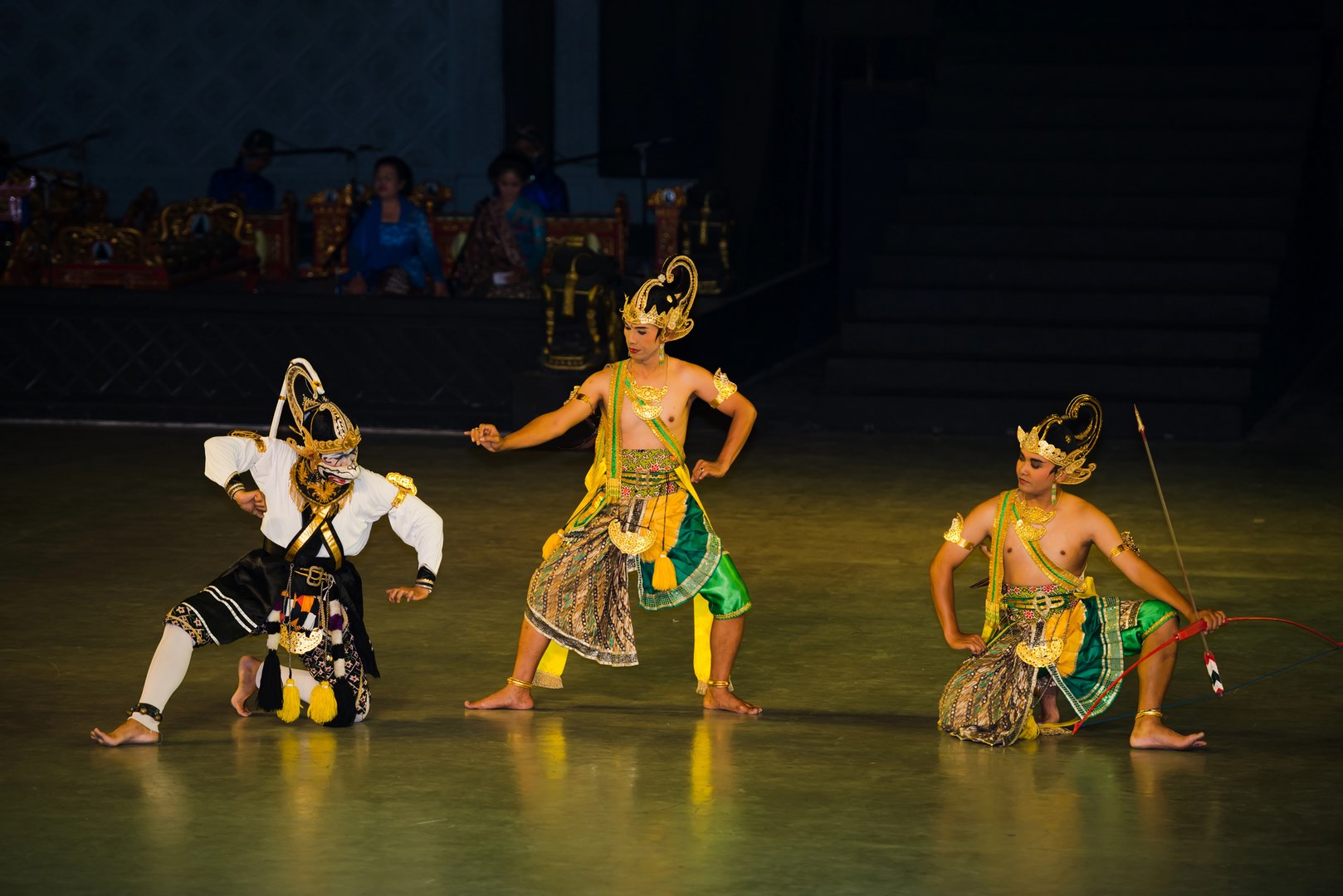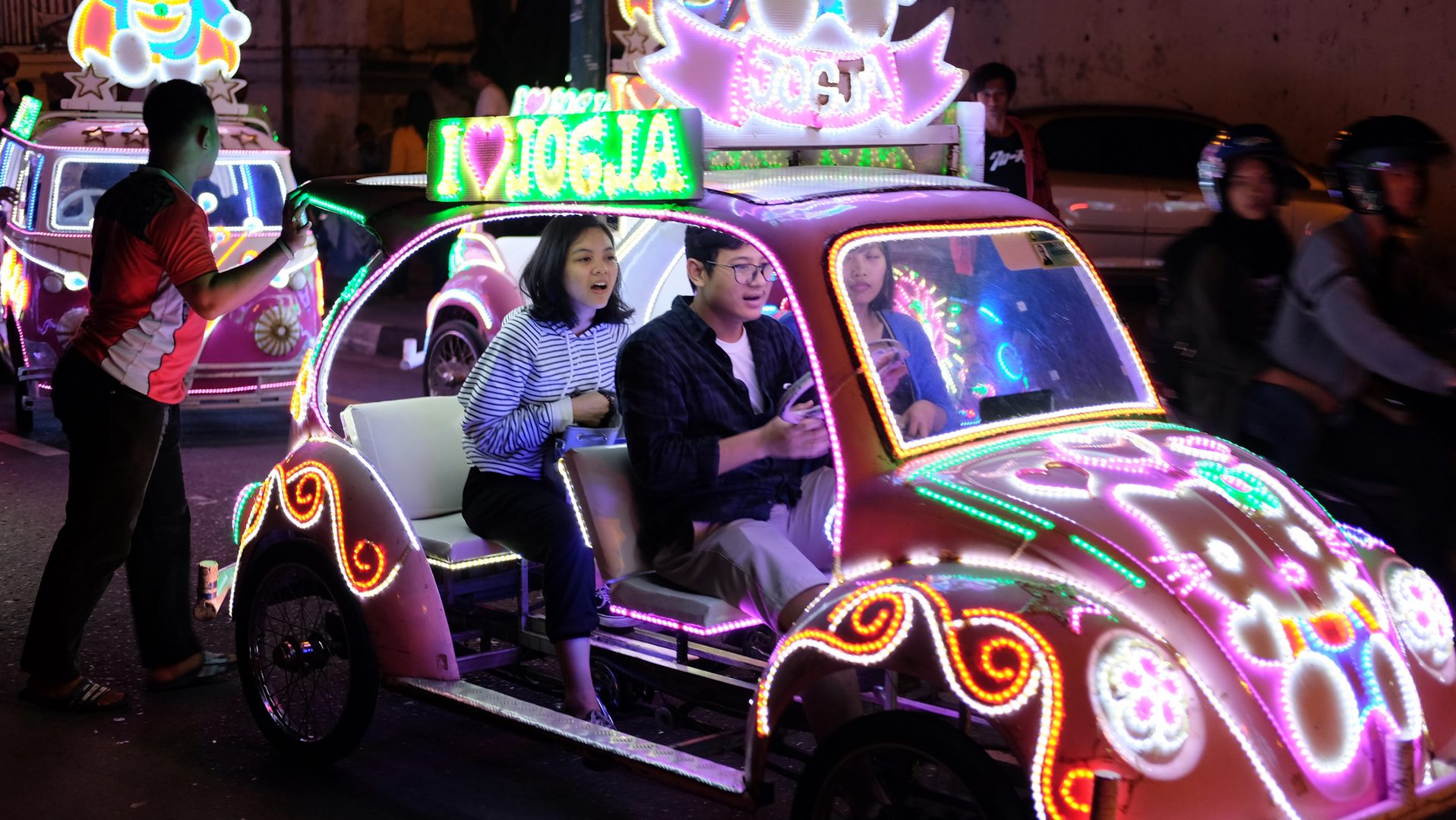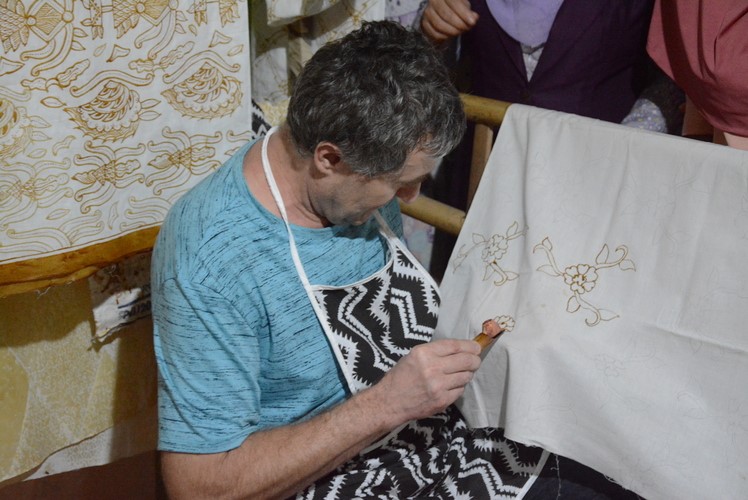Yogyakarta, often called Jogja, is a must-visit destination when you’re in Indonesia. Why? Because this city is a blend of rich Javanese culture and tradition, opening the door to a deeper understanding of Indonesian heritage. Here, you can explore historical sites, museums, art, performances, entertainment, local culinary delights, stunning natural scenery, and learn about Javanese traditions and culture.

There are countless activities to enjoy during your stay in Yogyakarta, and they will surely leave you with unforgettable memories. So, what are you waiting for? Let me guide you to explore Yogyakarta, famously known as The Heart of Java.
I’ll show you the best things to do in Jogja—from sightseeing and outdoor activities to culinary recommendations and unique yet practical tips that only locals know.
Best Sightseeing Spots in Yogyakarta
Unlike many other Indonesian cities with fewer historical landmarks, Yogyakarta is steeped in history that comes alive at every turn. The city offers countless opportunities for sightseeing, where ancient heritage, vibrant culture, and natural beauty seamlessly come together. Here are some must-visit spots in Yogyakarta that will make your trip both exciting and enriching.
Keraton Yogyakarta (The Royal Palace of Yogyakarta)
The first must-visit destination in Yogyakarta is the Keraton Ngayogyakarta Hadiningrat or Yogyakarta Palace, but simply known as Keraton. This palace is the official residence of the Sultan and a well-preserved cultural heritage site. Once you step inside, you’ll feel the strong Javanese atmosphere, as the Keraton serves as the cultural center of Yogyakarta.

From 9 AM to 11 AM every day, visitors can enjoy free traditional art performances, including gamelan music, wayang kulit (shadow puppets), traditional songs, and dances. The type of performance varies daily, and you can check the schedule on their official Instagram. The palace also houses museums showcasing royal collections like batik, jewelry, traditional weapons, and more.

Not all areas are open to the public, but you can explore Kedhaton (the palace’s central area) and the Royal Carriage Museum (Waharantha). If you’re lucky, you might catch a temporary exhibition. I once attended the Parama Iswari exhibition about women’s empowerment in the palace, which highlighted the significant role of women in royal life. Interestingly, photography was restricted for certain items, making the visit even more special.
After exploring, don’t miss the chance to try the royal family’s favorite dishes at Bale Raos Restaurant, located near the palace exit. The food is delicious and surprisingly affordable.
Backindo Tip: Make sure to wear modest clothing as you’ll be visiting a sacred site.
Visitor Information:
- Opening Hours:
- Kedhaton: Tuesday – Sunday, 08:00 – 14:00
- Royal Carriage Museum: Tuesday – Sunday, 09:00 – 15:00
- Entrance Fee:
- Kedhaton: IDR 20,000 – IDR 25,000 (USD 1,22-1,53)
- Royal Carriage Museum: IDR 30,000 (USD 1,83)
- Tour Guide: IDR 50,000 – IDR 100,000 (USD 3,06-6,11)
Taman Sari (Water Castle)
Another very popular tourist attraction in Yogyakarta is Taman Sari, once the royal bathing complex for the Sultan’s family. Beyond being a bathhouse, Taman Sari also served as a water channel, resting area, meditation space, and even a fortress. Its grandeur earned it the nickname “Water Castle.”
Due to its complex layout, hiring a local tour guide is highly recommended—even locals like me often get lost here! Some highlights include the Umbul Binangun bathing pools, the majestic Gedhong Kenongo (an artificial island), and the famous Sumur Gumuling, an underground mosque.

From Keraton Yogyakarta, Taman Sari is just 1 km or a 10-minute walk. Along the way, you’ll find shops selling clothes, souvenirs, and charming traditional houses. For a more authentic experience, try riding a becak (pedicab) to Taman Sari—it’s truly fascinating!
Visitor Information:
- Opening Hours: Daily, 09:00 – 15:00
- Entrance Fee: IDR 20,000 – IDR 25,000 (USD 1,22-1,53)
- Tour Guide: IDR 50,000 – IDR 100,000 (USD 3,06-6,11)
Sonobudoyo Museum
Located near the Yogyakarta Palace, on the northern side of Alun-Alun Utara, the Sonobudoyo Museum is another great place to visit. It houses a diverse collection of historical artifacts and artworks, all presented with a modern visual touch. One of the highlights is its interactive audiovisual displays, providing a deeper understanding of Javanese culture.
For those interested in learning more about Javanese traditions, the museum also offers batik-making classes and traditional dance workshops.

Sonobudoyo Museum comes alive with various night art performances, including Wayang Kulit (shadow puppets), Wayang Golek, Wayang Orang, and Wayang Topeng Panji. These shows run from Tuesday to Sunday at 8 PM, with different performances each night. You can easily book your tickets via WhatsApp, and the contact number is available in the bio of their official Instagram account. The admin will gladly assist you with show schedules and ticket reservations. I personally recommend booking in advance to avoid missing out, as tickets can sell out quickly.
While most performances are in Javanese, don’t worry! You can download an English brochure at the entrance, and the host will provide an English introduction to help you understand the show.
Visitor Information:
- Opening Hours: Tuesday – Sunday, 8 AM – 8 PM
- Ticket Prices:
- Museum Entry: IDR 25,000 (USD 1,53)
- Performances: IDR 50,000 – IDR 100,000 (USD 3,06-6,11)
Borobudur Temple
Who doesn’t know this iconic temple? Borobudur Temple is the largest Buddhist temple in the world, located in Indonesia. It has been recognized as a UNESCO World Heritage Site and is also listed among the Seven Wonders of the World. Situated in Magelang, just north of Yogyakarta, this temple is an iconic landmark and a must-visit destination for travelers.

Built from volcanic stone, the temple covers an area of approximately 2,500 square meters, stands 35.40 meters tall, and consists of 10 levels. Its terraced structure is adorned with 505 Buddha statues and countless stone carvings that depict ancient life, mythology, and Buddhist teachings. You must try climbing to the top for an unforgettable experience! However, access to the top is limited, so it’s best to make an online reservation through Traveloka and choose your preferred time slot. I highly recommend visiting in the early morning to avoid the intense midday heat.
Interested in visiting Borobudur? Discover all the essential information and insider tips in our Borobudur Temple Guide: A Wonder of the World from Indonesia.
Other activities around Borobudur include watching the sunrise from Punthuk Setumbu Hill, visiting the famous Chicken Church, and exploring nearby temples like Mendut Temple. For outdoor enthusiasts, you can try fun rafting on the Elo River, or for a more challenging adventure, tackle the stronger currents of the Progo River.

Visitor Information:
- Entrance Fee: IDR 400,000 – IDR 455.000 (USD 24,45 – 27,81)
- Opening Hours: Daily, 06:30 AM – 05:00 PM
Prambanan Temple
If Borobudur is the largest Buddhist temple, Prambanan Temple is the largest Hindu temple in Indonesia. Located about 45 minutes from Yogyakarta city center, Prambanan is easily accessible via public transport, such as the Trans Jogja bus, with a stop right at the Prambanan bus station.

One of the main attractions at Prambanan is the Ramayana Ballet performance, held every evening. This spectacular show is staged at an outdoor theater with the magnificent temple as its backdrop and also at the Trimurti indoor stage. Besides watching the performances, you can explore the grand temple complex, which consists of three main temples surrounded by hundreds of smaller temples.

Want to make the most of your visit to Prambanan? Discover all the must-know tips and insights in our complete Prambanan Temple Guide: A Majestic Hindu Temple Complex.
Around the Prambanan complex, there are other stunning temples worth visiting, such as Plaosan Temple, Ijo Temple, Kalasan Temple, and Ratu Boko Palace, famous for its sunset views. If you’re interested in traditional archery, you can try jemparingan, a Javanese archery practice located near the temple at Jemparingan Mataram Archery.
Visitor Information:
- Opening Hours: Daily, 06:30 AM – 05:00 PM
- Entrance Fee: DR 400,000 (USD 24,45)
Things to Do in Yogyakarta
There are countless things to do in Yogyakarta, from simply strolling around the city, visiting historical sites, watching traditional performances, to enjoying local culinary delights and shopping for unique souvenirs.

Let me guide you through some of the best activities I usually do and share recommended things to do in Jogja, that will surely leave you with unforgettable memories.
Visit Malioboro Street
Malioboro Street is one of the most popular spots in Yogyakarta, drawing crowds of tourists daily. Yet, beyond its busy atmosphere, you can still discover hidden gems and quietly enjoy the city’s vibrant charm.

The wide pedestrian walkway, complete with comfortable benches, invites you to relax and watch the city’s lively rhythm unfold. As Yogyakarta’s shopping hub, Malioboro is the go-to place for unique souvenirs and local handicrafts. Shopping here is a fun experience, especially if you’re ready to bargain for better prices! To improve the flow of foot traffic, street vendors have been relocated to Teras Malioboro, creating a more organized and enjoyable shopping environment.
It’s also home to Beringharjo Market, a traditional market offering daily essentials like vegetables, snacks, and must-try local street food such as pecel (Javanese salad) and sate kere (grilled skewers). If you’re feeling hungry, stop by The House of Raminten, a unique restaurant serving traditional Javanese dishes with a cultural twist—complete with staff dressed in traditional attire.

Malioboro Street is also a strategic place to stay in Yogyakarta, especially if you enjoy a lively atmosphere and the convenience of having shops, attractions, and eateries within walking distance. The area offers a wide range of accommodations, from budget-friendly hostels and cozy homestays to comfortable hotels, catering to all types of travelers.
Nearby, you can explore historical sites like Vredeburg Fortress, admire colonial buildings around KM 0, or visit the Taman Pintar Science Museum, which is perfect for families with children.
Experience Bali Vibes on Prawirotaman Street
Prawirotaman Street is an interesting destination in Yogyakarta, especially for those who love nightlife. This vibrant area is filled with cozy cafés, souvenir shops, and lively bars, making it a popular spot for foreign tourists to stay. It’s no surprise that Prawirotaman is often called the “Bali of Jogja” due to its similar atmosphere—tourists strolling around, relaxing in cafés, and enjoying the laid-back vibes.
The locals around Prawirotaman are friendly and many can speak English, making it easy for visitors to interact and feel welcome. The area is also enriched with beautiful traditional and classic buildings, adding charm to the surroundings.

In Yogyakarta, Javanese culture is woven into everyday life, and you’ll encounter it at every turn.
A visit to Prawirotaman wouldn’t be complete without tasting the local culinary delights. I highly recommend trying gelato at the legendary Tempo Gelato, a must-visit ice cream café on Prawirotaman Street. For a delicious brunch, head to Via Via Jogja, a cozy café offering a variety of bread, pastries, and affordable Western dishes. Don’t forget to explore Oasis, a charming shop full of unique and affordable souvenirs and handicrafts.
If you’re planning to stay in Prawirotaman, I highly recommend Wonderloft Hostel Prawirotaman. It’s super cozy and comfortable, featuring a bar where you can enjoy a beer while soaking in the jacuzzi. For those traveling with family, there are also great hotel options nearby Ministry Homestay.
Access to Prawirotaman is very convenient, with plenty of public transportation options like the Trans Jogja bus and online taxis passing through this area.
Try Outdoor Activities in Yogyakarta
Yogyakarta isn’t just about cultural heritage and historical landmarks—it also offers breathtaking natural attractions and thrilling outdoor adventures that will make your trip unforgettable. From majestic mountains to exotic beaches, Yogyakarta is a paradise for nature lovers and adventure seekers.
Mount Merapi
In the north, you’ll find Mount Merapi, Indonesia’s most active volcano. Its powerful eruption in 2010 devastated several villages around its slopes, leaving behind a fascinating and dramatic landscape to explore.

Today, you can join the popular Merapi Lava Tour by jeep to witness the remnants of the eruption and experience the rugged beauty of the mountain up close.
Gunung Kidul (Exotic Beaches)
In the south, there’s the iconic Parangtritis Beach, famous for its mystical legends and stunning sunsets. Beyond that, the beaches in Gunung Kidul offer hidden coastal gems perfect for adventure.
Since many of these locations are far from the city center, it’s more convenient to join an organized tour package. For a more budget-friendly option, you can rent a motorbike—just make sure you have a valid driver’s license, or better to rent a car and driver, if you come with a group.

Explore the Caves: Pindul and Jomblang Caves
Gunung Kidul is also home to thrilling outdoor activities, there are also many caves you can explore. One of the most famous activities is exploring the vertical Jomblang Cave, known for its stunning sunlight known as ‘light from heaven’ view. To reach the bottom of the cave, you need to rappel from the cave’s edge for about 90 meters, which is quite a thrilling challenge.
For a more enjoyable experience, you can try fun tubing along Pindul Cave, a cave with a river flowing beneath it. You can jump off the karst rocks around the cave and dive straight into the water—it’s truly a fun experience!
Other outdoor activities you can try in Gunung Kidul include river trekking at Sri Gethuk Waterfall, tubing at Kalisuci Cave, hiking at Mount Nglanggeran (an ancient volcano), and crossing to a small island using a gondola at Timang Beach.
Enjoy Yogyakarta at Night
Yogyakarta comes alive at night with a variety of exciting activities. Take a relaxing evening stroll along Malioboro Street, enjoy shopping for souvenirs, and don’t miss sipping on the famous Kopi Jos, a unique coffee served with hot charcoal. For a cultural experience, watch the mesmerizing Ramayana Ballet at Prambanan Temple or Purawisata Yogyakarta. You can also catch traditional performances at the Sonobudoyo Museum, featuring Wayang Kulit (shadow puppets) and other Javanese arts.

For something more unique, enjoy a lively cabaret show at The House of Raminten, combining traditional and modern entertainment. If you’re looking for a more relaxed vibe, head to Prawirotaman, known for its cozy bars and live music, perfect for enjoying Jogja’s laid-back nightlife. Whether you’re into culture, local cuisine, or vibrant nightlife, Yogyakarta offers unforgettable night activities for every traveler.
Discover Yogyakarta’s Authentic Cultural Experiences
Yogyakarta is rich in traditional activities that offer visitors a deep cultural experience. One of the most popular is joining a batik-making workshop, where you can learn the intricate process of creating Indonesia’s famous hand-drawn fabric.

You can also try silver jewelry crafting and watch live performances of Wayang that tell ancient Javanese stories. For those interested in music, participating in a gamelan music class allows you to explore traditional Javanese instruments.

Additionally, you can experience jemparingan, a traditional Javanese archery practice that emphasizes calmness and focus. Engaging in these cultural activities offers a meaningful way to connect with Yogyakarta’s rich heritage and create unforgettable memories. They might just be some of the most unique and unusual experiences you can have while exploring the city.
Yogyakarta offers countless cultural experiences waiting to be explored. We've highlighted the best ones in our guide 7 Traditional Activities You Must Try in Yogyakarta.
Family-Friendly Attractions in Yogyakarta
If you’re traveling with kids, Yogyakarta is a great destination for a family vacation. The city offers a variety of kid-friendly attractions that blend fun with learning. A must-visit is Taman Pintar in the city center, where children can engage in interactive and educational games. Just a short walk away, the Kolong Tangga Museum displays a charming collection of traditional Indonesian children’s toys, offering a glimpse into the past.

For families who love animals, a visit to Gembira Loka Zoo can be an enjoyable experience. This well-maintained zoo is home to a wide variety of animals from around the world and offers interactive activities like feeding certain animals. However, one of the attractions includes elephant rides, which raises serious concerns about animal welfare. Elephants used for rides often endure harsh training and stressful conditions that can harm their physical and mental health. To support ethical tourism, it’s best to avoid attractions that exploit animals for entertainment and instead focus on observing and learning about wildlife in a more respectful way.
Backindo Tip: Avoid attractions that exploit animals for entertainment—say no to elephant rides and choose ethical wildlife experiences instead.
Also the newest, Ibarbo Park, this modern recreational park offers a variety of exciting rides, interactive play zones, and open green spaces, making it an ideal destination for families to relax and have fun together.
For a more exciting adventure, families can take a ride on a traditional dokar (horse-drawn carriage) around the city, visit a bakpia factory to see how this famous Yogyakarta snack is made, or join handicraft workshops to create unique souvenirs.
Visiting Yogyakarta with kids? Read 9 Family Friendly Tourist Attractions in Yogyakarta.
Bonus Tips: Explore Yogyakarta for Free
Yogyakarta offers plenty of exciting free activities that let you experience the city’s vibrant culture. Take a leisurely stroll along Malioboro Street, where street performers showcase traditional music and art. In the evening, visit Alun-Alun Kidul to try the famous blindfolded walk between the Twin Banyan Trees or simply enjoy the glowing pedal cars and lively atmosphere.
For a quieter escape, explore the colorful murals of Kampung Code or wander through the historic streets of Kotagede, known for its traditional Javanese architecture. You can also relax at KM 0, the city’s iconic gathering spot, where spontaneous performances often take place.

Don’t miss cultural events like the vibrant Wayang Jogja Night Carnival at Tugu Jogja, where parades and traditional performances light up the streets. For something more traditional, check if there are free art shows at Taman Budaya Yogyakarta (TBY).
Let’s Explore Jogja
A visit to Yogyakarta offers a perfect blend of rich history, vibrant culture, and warm local hospitality. Despite its popularity, the city still has peaceful spots where visitors can relax and connect with the local community.
With its affordable accommodations and delicious food, Yogyakarta provides an unforgettable experience that often leaves travelers eager to return to the heart of Java. From exploring historical sites to discovering hidden gems, there’s no shortage of exciting experiences—this guide on what to do in Yogyakarta will help you make the most of your trip.
What next?
- 7 Traditional Activities You Must Try in Yogyakarta
- Yogyakarta Itinerary: 3 Days and 2 Nights, Including Historical Places and Attractions
- Complete Guide to Accommodation in Yogyakarta & Tips Where to Stay
- How to Get Airport Train from Yogyakarta International Airport (YIA) to Yogyakarta
- Public Transportation in Yogyakarta

